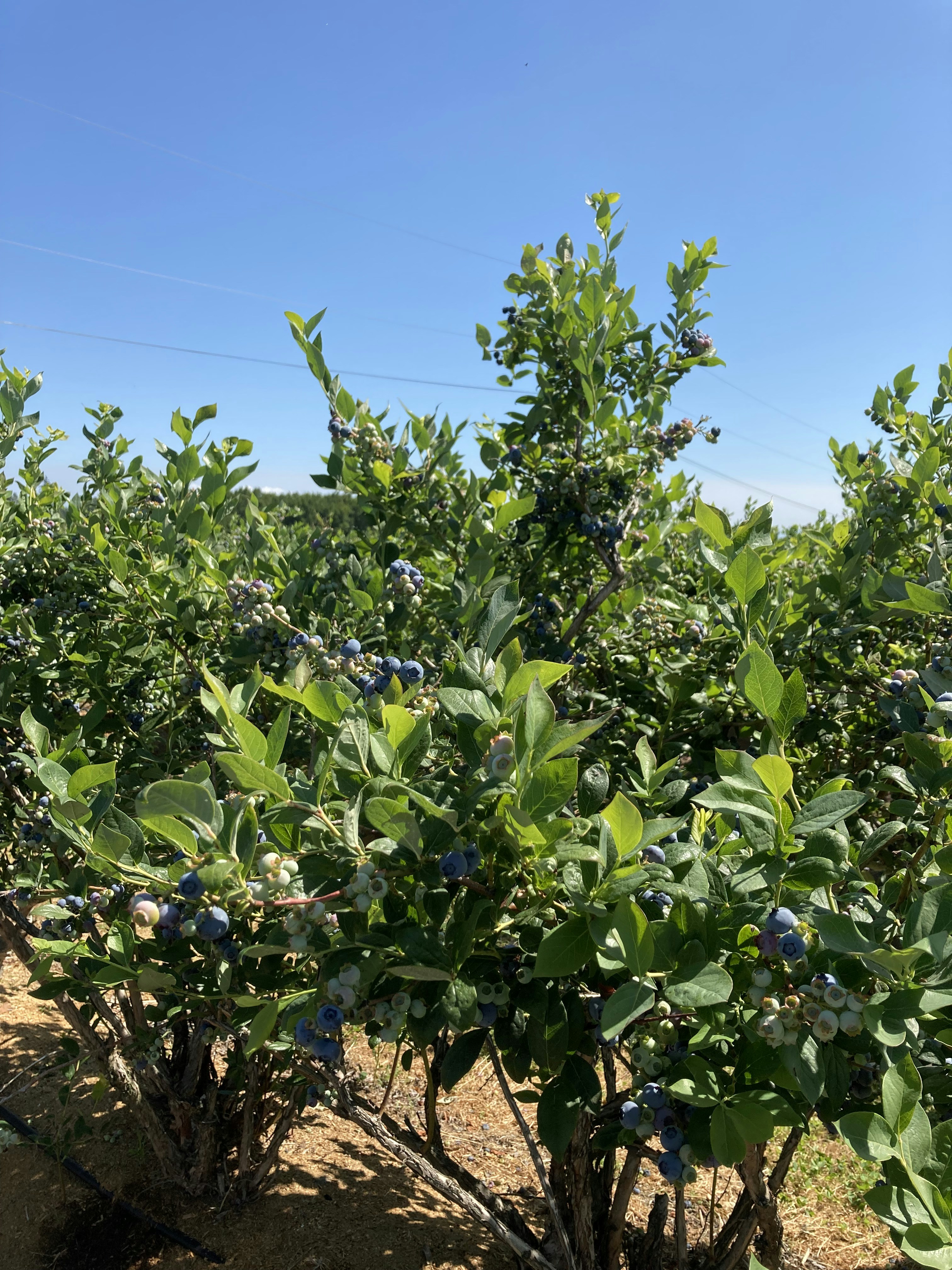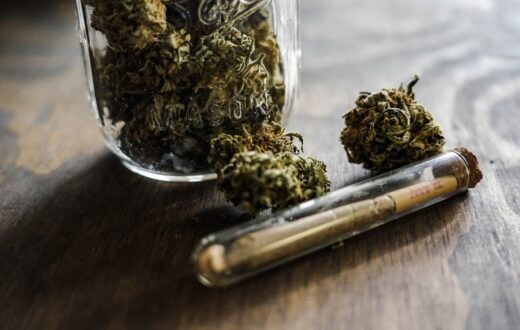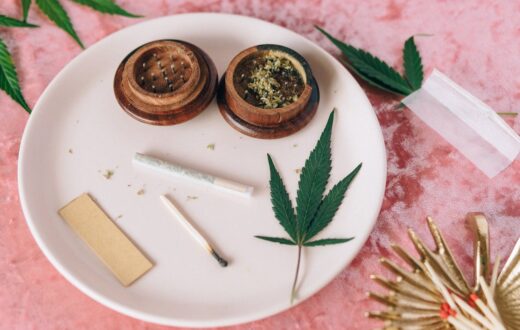Introduction to Blueberry FV
Blueberry FV is a renowned cannabis strain that has earned its reputation within the growing community for its unique characteristics and exceptional quality. Originating from the famous Blueberry lineage, Blueberry FV is celebrated for its high yield potential, making it a popular choice among both novice and experienced growers aiming to cultivate cannabis of superior quality. The genetic background of Blueberry FV can be traced back to a combination of traditional Blueberry strains and advanced breeding techniques, which have resulted in a strain that not only produces abundant harvests but also offers a distinct aromatic profile.
The aroma of Blueberry FV is one of its most captivating features, reminiscent of ripe blueberries combined with earthy undertones and sweet floral notes. This olfactory delight enhances the growing experience, as many cultivators value the sensory pleasures associated with nurturing this strain. In addition to its intoxicating scent, Blueberry FV is known for its visually appealing buds, which are often coated with a layer of frosty trichomes, showcasing their high resin production. These trichomes contribute to the psychoactive potency and overall allure of Blueberry FV, making it a sought-after strain within the cannabis community.
The effects of Blueberry FV are equally noteworthy; users report a balanced mix of relaxation and euphoria, providing both mental clarity and physical comfort. This characteristic makes it suitable for various occasions, whether for unwinding after a long day or socializing with friends. As more growers seek to understand how to grow Blueberry FV effectively, its significance in the cannabis world continues to grow, solidifying its place as a cornerstone of high-yield cannabis cultivation. In conclusion, the combination of its rich heritage, pleasing aroma, and well-rounded effects makes Blueberry FV an exceptional strain worth cultivating for those looking to enhance their growing repertoire.
Essential Growing Requirements
To successfully cultivate the Blueberry FV strain, an understanding of its essential growing requirements is crucial. Firstly, the climate plays a significant role in the development and productivity of this high-yield cannabis strain. Blueberry FV flourishes in a temperate climate, characterized by warm summers and mild winters. Ideally, daytime temperatures should range from 70°F to 80°F (21°C to 27°C), while nighttime temperatures should not drop below 60°F (15°C). These temperature conditions facilitate optimum photosynthesis and overall plant growth, leading to a better yield.
Humidity levels are another critical factor. During the vegetative stage, Blueberry FV thrives in a relative humidity of about 40% to 60%. This range encourages healthy leaf and root development without fostering conditions that lead to mold or mildew. However, as the plant transitions to the flowering stage, it is recommended to lower the humidity to around 40% to prevent the growth of pests and diseases, which can negatively impact yield and quality.
Soil composition is equally important in the growth of Blueberry FV. This strain prefers well-aerated, nutrient-rich soil with good drainage. A pH level between 6.0 and 7.0 is optimal for nutrient uptake. Utilizing a mix of organic compost, perlite, and peat moss can help achieve the spatial structure needed for healthy root development. Regular monitoring of soil moisture and nutrients will also contribute to the overall health of the plants.
Ensuring these essential growing conditions are met will significantly enhance the likelihood of a fruitful harvest. From climate and temperature to humidity and soil specifics, each factor plays a vital role in how to grow Blueberry FV effectively. By adhering to these guidelines, cultivators can expect not only healthy plants but also a substantial yield of this beloved cannabis strain.
Seeds vs. Clones: Which to Choose?
When considering how to grow Blueberry FV, it is essential to evaluate the choice between starting from seeds or utilizing clones. Both methods have distinct advantages and disadvantages that may influence a grower’s decision based on their specific circumstances and preferences.
Starting from seeds offers several benefits, particularly for those looking to cultivate a variety of genetic traits. Seeds can provide a broader genetic diversity, enhancing the resilience of the plants against pests and diseases. Furthermore, seeds allow growers to potentially discover unique phenotypes, which could lead to superior cultivation outcomes. However, the downside is that germinating seeds can be a more time-consuming process, requiring careful attention to ensure optimal conditions such as temperature and moisture levels. Additionally, not all seeds will result in female plants, which could lead to wasted resources if males are produced.
On the other hand, clones are a favored choice among experienced cultivators, particularly when aiming for efficiency and consistency. Clones are genetic replicas of a parent plant, which means growers know exactly what characteristics they will inherit, including yield, flavor, and potency. This predictability simplifies the growing process, especially for novice cultivators or those looking to maximize their harvests quickly. However, clones come with their own challenges. They are particularly susceptible to diseases and pests present in the parent plant, making thorough health evaluations essential before propagation. Additionally, obtaining clones might require access to a well-established grower or a reputable nursery, which may not always be feasible for everyone.
Ultimately, the choice between seeds and clones depends on the grower’s experience level, available resources, and specific goals in cultivating Blueberry FV. It is advisable to weigh the pros and cons of each method carefully to ensure the best results in growing this sought-after cannabis strain.
Soil and Nutrient Essentials for Blueberry FV
When aiming to cultivate high-yield Blueberry FV cannabis strains, understanding the soil and nutrient requirements is crucial. The type of soil used plays a significant role in the growth and overall health of the plants. Blueberry FV thrives in well-draining, acidic soil with a pH range of 5.5 to 6.5. A soil mixture that includes organic components such as peat moss, pine bark, and perlite is recommended, as these materials enhance drainage and aeration while maintaining the necessary acidity.
In addition to soil composition, the choice of nutrients significantly impacts the growth of Blueberry FV. There are two main categories: organic and synthetic nutrients. Organic nutrients, derived from natural sources, are often preferred by growers aiming for a more sustainable approach. They improve soil health over time and enhance the flavor of the final product. On the other hand, synthetic nutrients provide immediate availability to plants, which can lead to rapid growth if used correctly. It is critical to identify the growth stage of the plant to determine the appropriate nutrient type and formulation.
The fertilization schedule of Blueberry FV also requires careful planning. During the vegetative stage, a nutrient solution high in nitrogen is essential to promote leafy growth. In contrast, during the flowering phase, a nutrient mixture rich in phosphorus and potassium facilitates bud development. Regular monitoring of nutrient levels and adjusting them based on plant needs will help prevent deficiencies and toxicities, which can adversely affect yield and health. Ultimately, understanding the interplay between soil quality and nutritional input is vital for any grower aspiring to cultivate high-yield Blueberry FV plants successfully.
Watering Techniques and Scheduling
Watering is a critical component in the cultivation of Blueberry FV plants, as it directly influences their growth cycle and overall yield. To begin with, understanding the moisture needs of your plants is essential. One effective method of testing soil moisture is using your finger; if the top inch of soil feels dry, it is time to water. Additionally, moisture meters can provide a more accurate reading of soil conditions, ensuring that you do not over or under-water your plants.
The best practice for watering Blueberry FV plants is to provide a deep and thorough soak, allowing the water to penetrate the root zone. This approach encourages the roots to grow deeper, seeking moisture and nutrients available in the soil. It is advisable to water the plants early in the morning or late in the afternoon, avoiding the hottest parts of the day when evaporation may occur. Consistency is key; a regular watering schedule, approximately every 2-3 days, may be ideal depending on your local climate and the stage of growth.
Common mistakes to avoid include allowing the soil to become completely dry or waterlogged, as both conditions can impede root growth and lead to stress in the plants. Additionally, neglecting to adjust the watering schedule according to seasonal changes can adversely affect the health and yield of your Blueberry FV plants. It is crucial to monitor the specific needs of the plants throughout their growth cycles, adjusting the watering frequency based on factors such as temperature, humidity, and plant maturity.
By employing these watering techniques and scheduling practices, you can optimize the health and productivity of your Blueberry FV plants, ultimately enhancing their yield potential.
Lighting Conditions for Maximum Yield
When cultivating Blueberry FV, understanding the optimal lighting conditions is essential for maximizing yield and promoting healthy growth. Light plays a pivotal role in the photosynthesis process, enabling plants to convert light energy into chemical energy. Whether you choose to grow indoors or outdoors, the appropriate lighting techniques will significantly impact the overall health and productivity of your cannabis plants.
For indoor growing, selecting the right grow lights is crucial. High-intensity discharge (HID) lights, such as metal halide (MH) and high-pressure sodium (HPS), are popular choices among cannabis cultivators due to their efficiency and ability to produce a high yield. LED grow lights have also gained popularity as they offer energy efficiency, longevity, and customizable light spectrums suitable for different growth stages. When determining the lighting setup, it is vital to consider the light cycle. Blueberry FV typically thrives with an 18/6 light cycle during the vegetative phase and a 12/12 cycle when transitioning to the flowering stage.
For outdoor growth, maximizing natural sunlight exposure is key. Blueberry FV benefits from at least six to eight hours of direct sunlight daily. Selecting an optimal planting location that minimizes shade from trees and structures can drastically enhance your plants’ growth potential. Additionally, utilizing reflective materials around the growing area can help bounce light towards the plants, further improving their exposure.
Regardless of the growing environment, monitoring light distance is also crucial. Lights that are too close can cause heat stress and light burn, whereas those that are too far can inhibit photosynthesis. Using a light meter can ensure that your Blueberry FV plants receive the appropriate intensity necessary for robust growth and flowering. By carefully optimizing lighting conditions, growers can enhance the yield and quality of their Blueberry FV plants, making the effort well worth it.
Pest and Disease Management
Growing Blueberry FV cannabis strains requires an understanding of pest and disease management to ensure healthy plants and maximize yields. Common pests that often affect cannabis, including the Blueberry FV strain, are aphids, spider mites, and whiteflies. These pests can affect plant vitality by sucking the sap from leaves and stems, leading to stunted growth and reduced yields. Additionally, diseases such as powdery mildew and root rot can compromise the health of Blueberry FV plants, further impacting their development.
Preventative measures are essential in managing pests and diseases. To start, maintaining proper environmental conditions is crucial. Blueberry FV thrives in a controlled climate with adequate humidity, temperature, and airflow. This reduces the likelihood of infestations and diseases. Regular inspection of plants can help in identifying any early signs of pests and diseases. Look for discoloration, wilting, or webbing, which might indicate a problem. Clean tools and equipment before use to prevent the spread of pathogens.
When it comes to treatment, organic pest control methods can be effective and beneficial for the environment. Neem oil, insecticidal soaps, and companion planting can help deter pests while also being safe for the cannabis plants. For diseases like powdery mildew, ensuring good air circulation and using fungicidal sprays can aid in addressing outbreaks. Implementing integrated pest management (IPM) strategies, combining cultural, biological, and chemical methods, may offer a systematic approach to tackle both pests and diseases without harming the plants or their yield.
In summary, focusing on pest and disease management is essential for anyone looking to grow Blueberry FV successfully. By implementing preventative measures and utilizing organic treatments, growers can protect their plants and encourage robust growth, ultimately resulting in high yields.
Harvesting and Curing Blueberry FV
Harvesting Blueberry FV at the right time is crucial for ensuring optimal yield and quality. The ideal moment to harvest cannabis plants can be determined through several indicators, including the trichomes and the pistils. Growers should observe the trichomes using a magnifying tool; when they shift from clear to a milky white appearance, it indicates peak THC levels. If the trichomes turn amber, it may suggest a more sedative effect, which might not be desirable for those aiming for an uplifting experience.
In addition to trichome observation, examining the pistils is also beneficial. As the plant approaches maturity, the pistils change color from white to dark orange or brown. Harvesting when approximately 70% of the pistils have darkened can help achieve a balanced effect. The best practice is to ensure that these indicators are aligned for a successful yield.
When it comes to actual harvesting techniques, a sharp, clean pair of scissors or pruning shears is essential to avoid damaging the plant. Care should be taken to cut branches at a 45-degree angle and close to the main stem, which promotes better air circulation during the drying process. Each branch can be trimmed of large fan leaves, allowing the smaller leaves to remain, as these contain valuable resin and contribute to the flavor profile during curing.
Curing Blueberry FV properly is equally important for preserving its flavor and potency. After harvesting, it is advisable to hang the branches upside down in a dark, well-ventilated area. Once the stems snap easily, the buds can be placed in airtight glass jars. During the first few weeks, it is essential to open the jars for a few minutes each day to allow moisture to escape and to check for any mold development. This gradual curing process enhances the flavor and ensures a smoother smoke, producing the distinct, aromatic qualities associated with Blueberry FV.
Conclusion: Achieving Success with Blueberry FV
Successfully cultivating Blueberry FV involves understanding its unique requirements and adhering to best horticultural practices. Begin by ensuring that your plants receive the appropriate amount of light, nutrients, and water to optimize their growth. The significance of providing a balanced diet cannot be overstated; using high-quality fertilizers tailored for cannabis can greatly enhance yield and potency.
Additionally, environmental conditions play a crucial role in the cultivation of Blueberry FV. Maintaining the correct temperature and humidity levels is essential for preventing mold and pests, which can drastically impact the health of your plants. Consider investing in a quality ventilation system or monitoring equipment to help manage these factors more effectively.
As you progress with your cultivation journey, keep detailed records of your growing conditions and plant performance. This practice will not only aid in identifying what works best for your specific setup but also foster a deeper understanding of how various elements affect the growth of Blueberry FV. Your experiences can serve as valuable insights for other growers in the cannabis community.
Furthermore, engaging with fellow cultivators can provide a wealth of knowledge. Online forums and local grow clubs are excellent resources for sharing experiences, troubleshooting issues, and discussing best practices. By connecting with others passionate about cultivation, you can learn from their successes and challenges with Blueberry FV, ultimately enhancing your skills.
In conclusion, growing Blueberry FV can be a rewarding endeavor when approached with careful planning and dedication. By following the outlined guidelines, engaging with the community, and continuously seeking ways to refine your methods, you will maximize your potential for a successful harvest. Enjoy the satisfying journey of cultivating high-yield cannabis strains and the bounty that comes with it.












